Discovering the Cultural Richness of the Dubai Museum
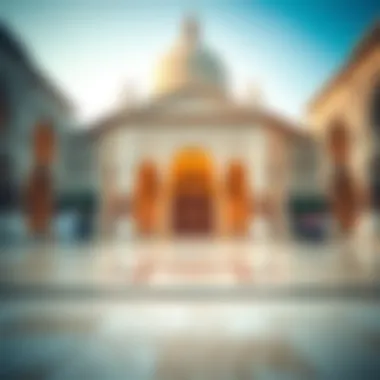
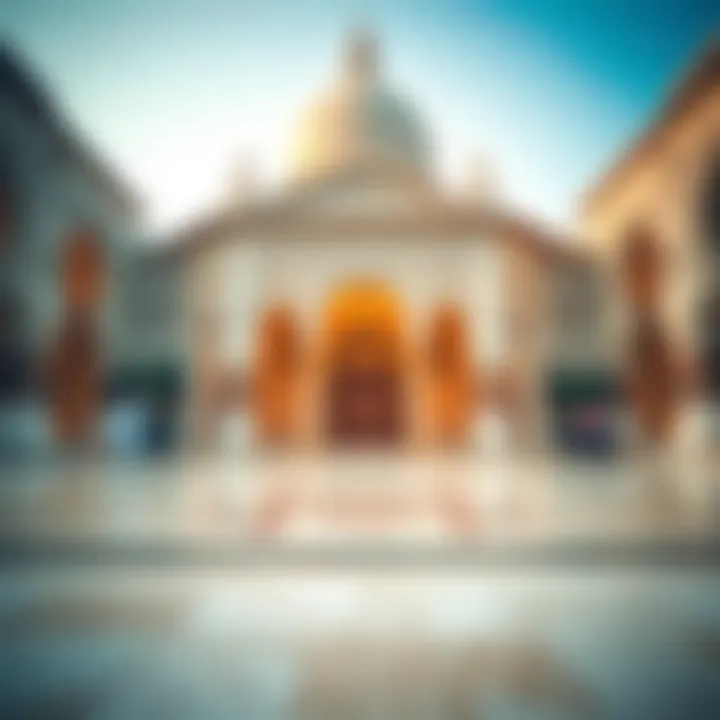
Intro
Visiting the Dubai Museum feels like stepping through a time machine that thrusts you into the heart of the city’s soul. As you wander through its well-crafted halls, it becomes clear that this institution is not just a repository of artifacts; it’s a vibrant storyteller that chronicles the rapid evolution of Dubai from a humble fishing village to a global hub of trade, culture, and innovation. The museum houses a variety of exhibits that showcase local traditions, historical milestones, and the fascinating interplay of cultures that have shaped the emirate’s identity.
The architecture of the Dubai Museum itself is a nod to historical practices and contemporary aspirations. Positioned within the Al Fahidi Fort, which dates back to 1787, the museum blends the past with present modernity. The fort’s coral stone structure, marked by its tall wind towers, stands as testament to the ingenuity of ancient Emirati architects. Yet, within its walls, sleek exhibition designs and interactive displays offer a fresh perspective on what a museum can be.
Whether you’re a local resident or a traveler from afar, the museum acts as a cultural compass, guiding you through the rich tapestry of the UAE's heritage. This article delves into the various dimensions of the Dubai Museum, shedding light on its architectural significance, transformative exhibitions, and its impact on both tourism and education.
Moreover, the museum plays an indispensable role in preserving local traditions amidst the bustle of modern development. It helps bridge the gap between generations, ensuring that the younger populace understands their roots while also embracing contemporary advancements. In the following sections, we will explore the museum's exhibitions, its contributions to cultural education, and its noteworthy position in the tourist landscape of Dubai.
Foreword to the Dubai Museum
The Dubai Museum stands as a monumental embodiment of the city’s storied past and vibrant culture. It is not merely a collection of artifacts and exhibits; rather, it serves as a portal through which one can journey back in time, grasping the intertwined narratives that have shaped modern Dubai. This section lays the groundwork for understanding why the museum is an essential institution both for locals and visitors alike. Its significance resonates beyond mere tourism; it plays a critical role in instilling a sense of identity and pride among the populace while facilitating a deeper appreciation of cultural narratives in a world that often prioritizes the new and the flashy over the historical and the significant.
Among its benefits is the museum’s commitment to cultural preservation, a topic we shall explore shortly. This commitment resonates with anyone keen on understanding how places like Dubai have evolved from small coastal settlements into hubs of innovation and luxury. So, let’s delve into the crucial facets surrounding the notion of cultural preservation.
Significance of Cultural Preservation
Cultural preservation is no small potato; it is the lifeblood of a community's identity. In Dubai, a city defined by rapid development and modernity, the museum acts as a guardian of the past. Through dynamic exhibits, it preserves stories and traditions that shaped Emiratis’ lives long before the skyscrapers dotted the skyline.
As urban landscapes shift, so do the narratives we associate with them. The struggles and triumphs of the early Bedouin tribes, the thriving pearl diving industry that once ran the economy, and the commercial corridors that sprung up—these are stories that can easily be forgotten if not actively preserved. By collecting artifacts such as traditional clothing, tools, and even recordings of oral histories, the museum ensures these stories remain alive for generations to come.
When one thinks about preservation, it’s essential to consider that it’s about more than just keeping old things; it’s about retaining the essence of a culture that forms the backbone of the community. The significance of cultural preservation in the Dubai Museum might lead to more profound realizations: the juxtaposition of history and modernity is not just a matter of choice, but a necessity in maintaining a cohesive narrative.
Overview of Dubai’s Historical Context
To fully appreciate the role of cultural preservation within the Dubai Museum, one must first grasp the historical context of Dubai itself. Born from humble beginnings, this city was primarily a fishing and pearling village along the Arabian Gulf. The transformation into a global metropolis is nothing short of remarkable. In the early 20th century, Dubai was a trading port, serving as a bustling stopover for merchants traveling between Europe and Asia.
The discovery of oil in the 1960s was a game changer, propelling the city into an era of prosperity and opportunity. However, many might miss the stories of the people, the traditions, and the lifestyles that predicated Dubai’s rapid growth.
- Investigating life before oil:
- The oil boom and its repercussions:
- Subsistence based on fishing and date farming.
- The rise and fall of pearl diving.
- The cultural significance of Bedouin traditions.
- How wealth transformed the community.
- Immigration waves and the multicultural tapestry it created.
- Shifts in lifestyle and profession as the economy diversified.
This historical tapestry is integral to understanding the city’s contemporary identity. The transformation of Dubai is not merely about architectural marvels; it’s about how past experiences shape modern aspirations. By grounding itself in rich history while embracing the future, the Dubai Museum is thus not just a gallery of the past but a reflection of a society in constant dialogue with its heritage.
Architectural Journey
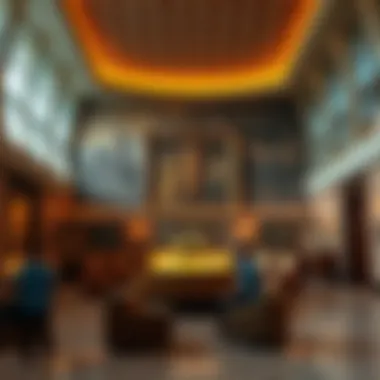
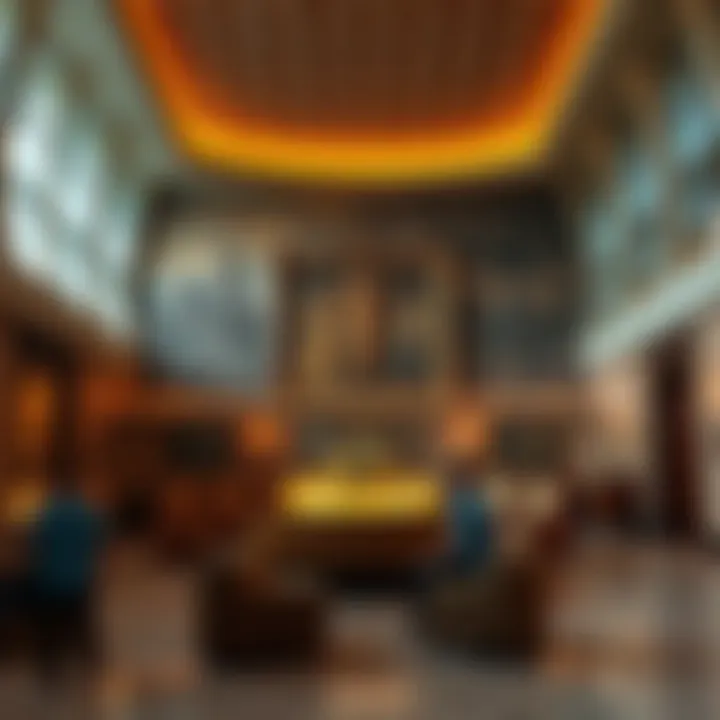
The architectural journey of the Dubai Museum is not just about bricks and mortar, but about the narratives they convey. This aspect serves as a lens through which the rich tapestry of Dubai’s history, culture, and aspirations is expressed. By examining both the original fort and modern additions, visitors can appreciate how the built environment mirrors the city’s evolution, from a modest trading post to a global hub. Each stone and structure tells a story of resilience and innovation, reflecting the broader changes that have swept through the region.
Features of the Original Al Fahidi Fort
Constructed in the late 18th century, the original Al Fahidi Fort stands as a testament to traditional Emirati architecture. Made primarily of coral stones and plaster, the fort’s structure embodies the local building techniques relevant to the time. Its thick walls served a dual purpose: to keep the interior cool during the sweltering summer months and to offer protection from potential invaders.
The fort’s towers, particularly the circular watchtower, are iconic and symbolize the strategic foresight of Dubai’s early leaders. It played a crucial role, not just as a military stronghold, but as a seat of governance, showcasing a different era of authority and community interaction. As you wander through its corridors today, the walls seem to echo the whispers of history—a narrative of a society molded by trade and cultural dialogues with neighboring regions. The robust wooden doors and intricate latticework further speak of artistry and craftsmanship that defined Emirati interiors.
Modern Additions and Design Innovations
In contrast to the original fort, the modern extensions of the Dubai Museum represent a bold leap toward contemporary design. These additions integrate state-of-the-art technologies with traditional elements, allowing for a harmonious blend of the old and new. The museum now features interactive displays and digital interfaces that engage visitors in ways previously unimaginable.
These modernizations not only serve aesthetic purposes but enhance the educational experience. For instance, immersive exhibits leverage augmented reality, allowing visitors to witness moments in history that shaped Dubai as we know it. Large media screens display informative content about various artifacts, ensuring that those less familiar with the historical context can grasp the significance of each piece.
Moreover, these expansions have been constructed considering sustainable practices. Emphasizing energy-efficient materials and systems, the museum aims to minimize its environmental footprint while celebrating culture. This approach reflects Dubai’s commitment to balancing modernity with sustainability, underscoring a broader ambition of the emirate to pave a green path in its rapid development.
With this marriage of heritage and innovation, the Dubai Museum not only preserves the past but propels it into the future, making it a vital part of the city’s identity.
Exhibitions and Artifacts
The Exhibitions and Artifacts section is a vital piece of the puzzle when it comes to understanding the Dubai Museum. This part of the museum chronicles not just the timeline of Dubai's many metamorphoses but also embodies the very essence of its culture and traditions. The artifacts on display serve as physical manifestations of the narratives that define Dubai's historical and cultural identity. They invite not only curiosity but offer a chance for deeper engagement, encouraging visitors to connect with the emirate's past on a personal level.
Historical Exhibits: Glimpses into the Past
In the realm of historical exhibits, the museum showcases various artifacts that date back to Dubai’s early days, providing what one might refer to as a time capsule of the region. These include ancient tools, pottery, and even textiles that tell stories of the emirate’s pre-oil era. Visitors can see how the early inhabitants thrived in a harsh desert environment, utilizing available resources to sustain their livelihoods.
For instance, an exhibit featuring traditional fishing nets and pearl diving equipment encapsulates the spirit of a community that once relied on the sea for its sustenance. Such artifacts don’t merely gather dust in a gallery; they evoke a sense of nostalgia and pride in the city's rich maritime heritage.
"Dubai Museum's collection reflects the heart and soul of a city that transformed from a small fishing village into a global hub."
Cultural Displays: The Heritage of Dubai
Cultural displays within the museum are another cornerstone highlighting Dubai's heritage. Here, exhibits illustrate the region's diverse traditions, customs, and practices that have been passed down through generations. From intricate Bedouin tents portraying nomadic life to displays detailing traditional falconry, these exhibits paint a vivid picture of how cultural practices have shaped societal norms.
Including artifacts like traditional jewelry and clothing, these displays showcase the artistic skills of local artisans. The craftsmanship is not just eye-catching; it reveals the meanings and symbols behind each piece, providing insight into the social fabric of Dubai. The museum curators do a commendable job of bringing these traditions to life, allowing visitors to appreciate how they continue to influence modern Emirati identity.
Interactive Experiences for Visitors
To keep up with the evolving nature of museums, the Dubai Museum integrates interactive experiences that enhance understanding and engagement. These activities are designed not just for entertainment but also for education. Visitors of all ages can take part in workshops where they can learn traditional crafts such as pottery making or weaving.
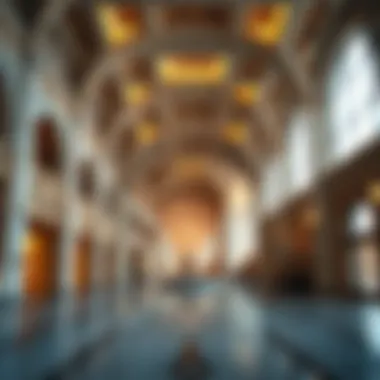
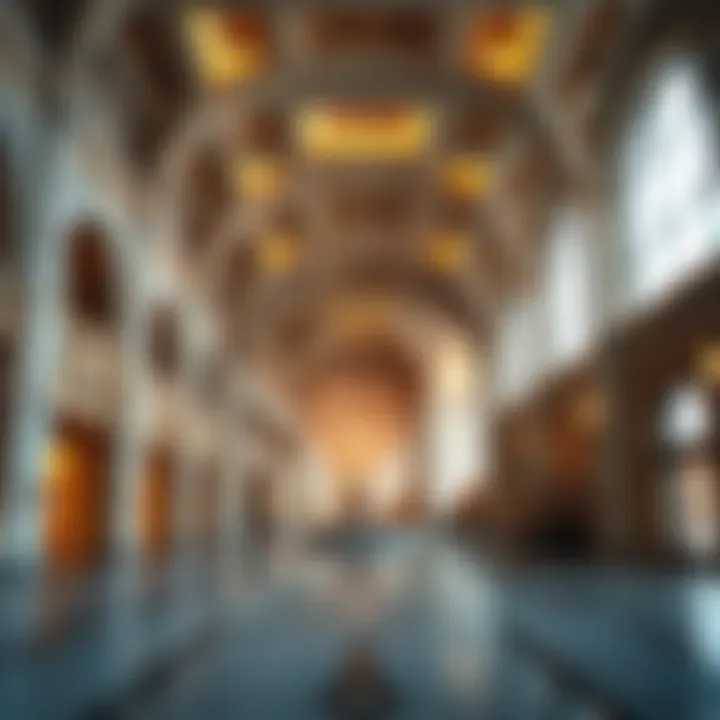
There are also digital displays where visitors can delve deeper into the stories behind the artifacts. This modern twist allows everyone to trace the evolution of Dubai through their own explorative journey, making history less of a dry subject and more of an experience. People can even engage with augmented reality features to see what artifacts looked like in their original context, giving a multi-dimensional view of history.
Overall, the exhibitions and artifacts hold paramount importance in establishing the museum's role as a cultural beacon. It sits at the intersection of education and engagement, fostering an appreciation that extends beyond the museum’s walls and resonates deeply with both residents and tourists alike.
Role in Education
The Dubai Museum plays a vital role in fostering education, not just within the walls of its exhibits but extending beyond, touching lives in multifaceted ways. This function as an educational hub emphasizes the significance of cultural institutions in enriching the understanding of local heritage and contemporary developments. It acts as a bridge between past and present, helping people grasp the nuances of Dubai's transformation.
Educational Programs and Workshops
At the heart of the museum's educational offerings is a variety of programs and workshops designed for diverse audiences. These initiatives aim to engage not just students, but also adults and families. Included within the museum's curriculum are interactive sessions that allow participants to delve deep into Emirati culture and history.
- Workshops often cover traditional crafts, such as pottery or weaving, allowing participants to experience the art firsthand and appreciate its significance in Dubai's history.
- Guest lectures from historians and cultural experts provide depth to the knowledge shared at the museum.
- Special programs often coincide with significant cultural festivals, making the museum an integral part of the vibrant community of Dubai.
These educational activities are not just informative; they encourage critical thinking, creativity, and a dialogue about Dubai’s cultural tapestry. Such programs also offer an opportunity for residents and visitors alike to connect with the city's identity, and help them understand its rapid evolution.
Collaborations with Schools and Institutions
The museum has carved out numerous partnerships with local schools and educational institutions. This collaborative approach ensures that the learning extends into classrooms, offering a curriculum that is rooted in real-world experiences.
- Field trips are organized where students can truly immerse themselves in the exhibits. This hands-on experience transforms theoretical knowledge into practical understanding.
- The museum often works with educators to design tailor-made workshops that meet learning objectives while also emphasizing cultural relevance.
- Collaborative events, such as cultural fairs or history competitions, foster a spirit of community among schools. These events invite students to showcase their projects and celebrate their learnings about Emirati culture.
Such collaborations reflect a broader understanding of education as a communal endeavor. By linking academic institutions with the rich resources of the museum, both teachers and students gain access to a wealth of knowledge that amplifies the learning experience.
Tourism and Economic Impact
Dubai is renowned for its skyline, luxury shopping, and opulent lifestyle. However, at its core, lies a rich historical narrative encapsulated within the walls of the Dubai Museum. This museum serves not only as a cultural hub but also plays a pivotal role in the tourism and economic landscape of the city. To understand its significance, one must look at two primary components: visitor demographics and trends, along with its contribution to Dubai's broader tourism sector.
Visitor Demographics and Trends
Understanding who visits the Dubai Museum delves into various factors of age, nationality, and interests. Generally, the visitors to the museum encompass a diverse mix:
- Local Residents: Emiratis and expatriates often tour the museum to deepen their understanding of Dubai’s history. With increasing interest from locals, it has become a spot for school trips and family outings.
- International Tourists: Travelers from Europe, Asia, and the Americas flock here, seeking authenticity in a city often seen as commercial. The museum provides a glimpse into the past that many tourists are eager to explore.
- Scholars and Students: With an academic interest in culture and history, students and researchers frequently visit to gain firsthand insight.
Interestingly, trends show an uptick in younger visitors, possibly influenced by social media sharing. The Instagram generation seeks places that offer more than just a picture-perfect backdrop. The museum’s commitment to interactive exhibits draws in tech-savvy youths, making it a blend of history and modern engagement.
Contribution to Dubai’s Tourism Sector
The economic implications of the Dubai Museum extend well beyond mere ticket sales. Here are some noteworthy contributions:
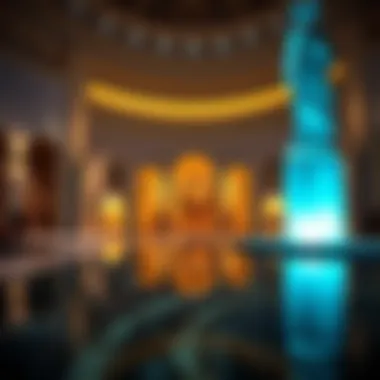
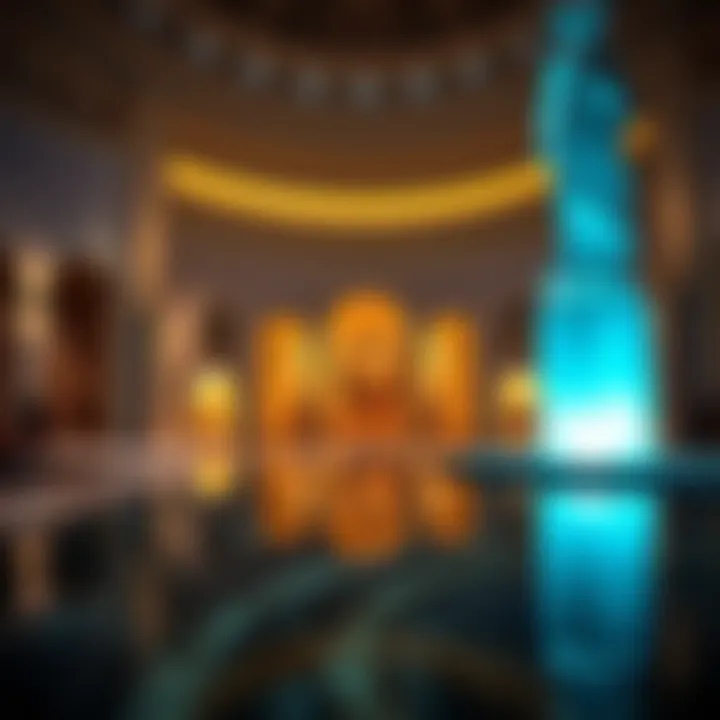
- Creating Jobs: The museum supports job creation, from curators to tour guides, directly impacting the local economy.
- Promoting Local Businesses: By increasing foot traffic in the surrounding areas, the museum helps small businesses thrive, offering local crafts, art, and cuisine. This direct engagement provides a holistic experience for tourists.
- Sustainability in Tourism: The Dubai Museum has also initiated eco-friendly practices, promoting sustainable tourism. Highlighting environmental conservation supports the city's broader objectives for responsible growth.
- Integrating Cultural Festivals: The museum hosts various cultural events that attract both locals and tourists, further solidifying its position as a cultural epicenter and stimulating economic activity around these events.
Future Aspirations
The Dubai Museum is not just a window into the past; it is also a beacon for the future. In a city known for its rapid progression and futuristic skyline, the museum must keep pace with both technological innovations and the changing expectations of visitors. Here, future aspirations play a significant role in shaping its identity, reinforcing its relevance in a world that moves at lightning speed. The integration of advanced technology, planning for expansions, and the introduction of new exhibits are pivotal to achieving this goal.
Plans for Expansion and New Exhibits
The notion of expansion is tied deeply to the desire to enrich the visitor experience. As the city continues to grow, so does the need to accommodate a wider spectrum of stories and artifacts that reflect the diverse cultural tapestry of Dubai. There are already discussions underway about adding galleries that center around the maritime history of Dubai, considering its roots as a pearl diving and trading center.
- New immersive experiences are also on the agenda, such as:
- 3D virtual reality tours that allow visitors to explore ancient Dubai in a simulated way.
- Cultural workshops that showcase traditional crafts and local folklore in greater depth.
Furthermore, these plans are not just about physical space; they illustrate a dedication to presenting future generations with the shape of their cultural legacy. By collaborating with local artisans and historians, the museum seeks to curate exhibits that are not mere relics but narratives that resonate with younger audiences. This helps to foster a connection between past traditions and present realities, ensuring these stories are not lost to time.
Sustainable Practices in Museum Management
The intention behind the management practices of the Dubai Museum includes a strong focus on sustainability. Museums worldwide grapple with the challenge of balancing environmental responsibility with cultural preservation. In Dubai, where the climate offers its own set of concerns, the museum's approach incorporates environmentally-conscious initiatives. This is important not only for the ecological footprint but also for setting an example for future cultural institutions wherever they may be.
- Key sustainable measures include:
- Implementation of energy-efficient systems to minimize resource consumption.
- Utilization of recycled materials for any structural renovations or new exhibits, demonstrating a commitment to being eco-friendly.
- Partnering with local environmental organizations to educate the public on sustainability principles through the lens of culture and tradition.
"By making responsible choices today, the Dubai Museum prepares to inspire tomorrow's custodians of culture and history."
Such practices not only align with global sustainability goals but also resonate with a growing demographic that prioritizes the importance of an institution that takes care of its cultural and physical surroundings. Through these future aspirations, the museum evolves into a vibrant center for history and environmental stewardship, beautifully merging the old with the new.
Finale: The Museum’s Essence
Culminating our journey through the Dubai Museum, it’s evident that this institution does more than just hold artifacts; it intertwines the past and present, crafting a narrative that is essential to understanding Dubai’s identity. The museum functions as a time capsule, revealing the layers of tradition and modernity that characterize this vibrant city. Every exhibit, every artifact tells of a richer story—each piece of history is a thread in the larger tapestry of Dubai’s cultural and social fabric.
Summary of Cultural Value
In reflecting on the cultural value of the Dubai Museum, we must consider several indicators that highlight its importance:
- Preservation of Heritage: It stands as a custodian of local traditions and stories that have shaped the emirate’s history. Through its diverse exhibitions, visitors gain insight into the centuries-old customs of the region, from Bedouin life to the evolution of trade.
- A Hub for Cultural Exchange: The museum fosters intercultural dialogues. It's not merely a Western-style setup; rather, it invites curiosity and discussion among its international visitors and local residents alike, promoting an understanding that goes beyond mere sightseeing.
- Educational Asset: As a venue for learning, the museum plays a crucial role. School programs and workshops tether students to their heritage while addressing contemporary issues and narratives that reflect their lives today.
- Community Engagement: The museum regularly involves local artists and residents in creating exhibitions, ensuring a vibrant conversation that brings authenticity to the cultural portrayal.
By serving various functions—educational, cultural, and social—the museum becomes an integral part of Dubai's identity. Its essence is rooted in the idea that understanding one’s history enhances the appreciation of the present.
Final Thoughts on Dubai’s Identity
When considering Dubai’s rapidly evolving identity, the museum’s role cannot be understated. As the city strides confidently into the future, it cleverly balances tradition with modernity. The museum provides a reference point; it reminds us of who we are in the face of globalization and change. The artifacts displayed within its walls are not just relics; they are symbols of resilience and adaptability, mirroring the spirit of the emirate itself.
Emphasizing the importance of community in this identity, the museum reflects how Dubai is not merely a city of skyscrapers and luxury; it’s also a mosaic of cultures and histories. Each visitor who walks through its doors becomes part of this ongoing narrative, gaining a deeper understanding of what it means to belong to this extraordinary place.
Ultimately, the Dubai Museum embodies the heartbeat of a city that honors its roots while being unafraid to forge ahead. It encapsulates the essence of Dubai, reminding both residents and tourists alike that within every futuristic skyline, there lies a rich heritage waiting to be explored.



